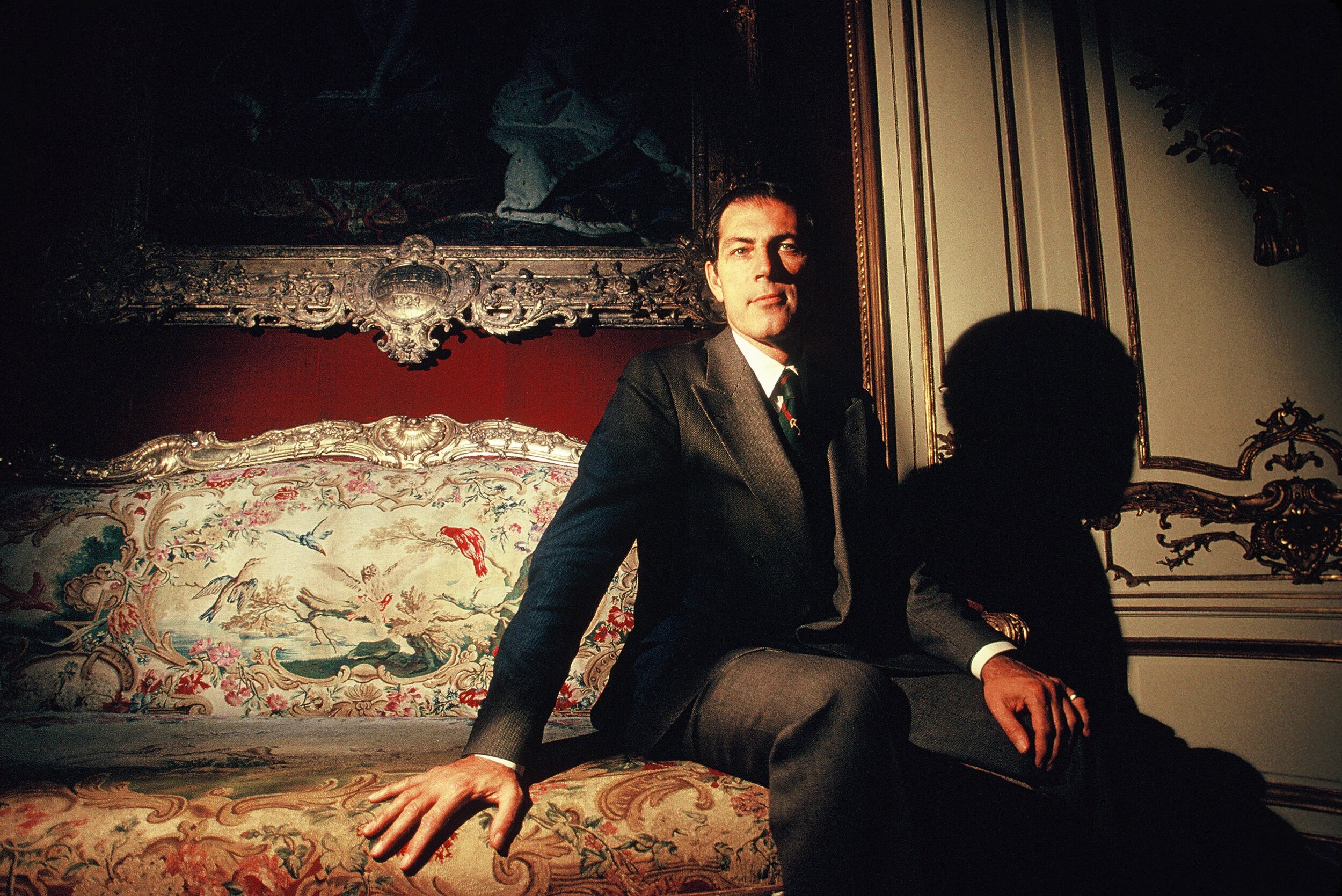J.Carter Brown and da Vinci at the National Gallery in D.C
If I could conjure up my literary heroes for creative assistance while scribbling my blogs, It would be like tasting a four layer cake from the bottom-up: delightfully messy. It is as silly as conjuring up my own funeral march led by Yo-Yo Ma or Led Zeppelin. My mind like the cake can be delightfully messy.
When I stopped photographing people, I realized those moments became chapters of my history. Fifty thousand of those transparencies became building blocks for life. I remember some with such joy, as if I was dancing naked atop a giant blue whale amid fifty foot waves.
In a small way, I am very much like Orson Welles. When asked who he would like to meet, he said Mao Zedong. When asked why, he said that he just wanted to meet the most interesting people. I did not realize it at the time, but thousands of people wanted to introduce me to people they knew would be interesting for me. I was not mature enough to know that my early career was emulating a family tree. The tree became a mini art history and a virtual “Who’s Who” cultural landscape for those years. The myriad of stranger’s faces from my art world sessions, looked like the personification of an ornamental Maple tree in fall bloom. I was Zelig’s ghost.
My white Converse Jack Purcells squished, squished and squished through the the empty corridors at The National Gallery in D.C. All the likely heroes winced (Van Gogh, Picasso, Rubens, Renoir, Monet) as I squished by. John Le Carré’s number one rule: to be a successful spy, no squishing. I squished. The larger the rooms, the louder my shoes would sound. I should have removed my shoes. It was Monday, who would know? It was just me on my way to meet one of the great museum directors in America, J. Carter Brown.
Philipe de Montebello Director of Metropolitan Museum of Art NYC
Boris Piotrovsky Director of The Hermitage Museum in Saint Petersburg
Museum Directors have a unique institutional role; They need to be exemplary executors of the collections. The guardians were/are always names (Philipe de Montebello, Boris Piotrovsky are good examples) that represented evolution and stability in modern art history. My privilege was to have photographed a dozen or so. Each and everyone shared their time and museums like a holiday gift.
Musee du Trocadero in Paris
When I arrived at the appointed (meeting place) painting, I had this electrifying epiphany. This must have been just as Picasso felt when he walked into the Musée du Trocadéro for the first time: “My greatest artistic emotions were felt when the sublime beauty of sculptures made by anonymous artists from Africa suddenly appeared to me. These works by a man of religious faith, passionate and strictly logical, are the most powerful and beautiful the human imagination has produced.” I felt as if I was walking in harmonious stride with Picasso and all his creative powers as I gazed into the eyes of a magnificent daVinci, Leonardo da Vinci.
Finally it was da Vinci and me. No guards, no authorities. Just us. It was silent love. Not even a squish, as I stood in quietude. This was not a dream come true. It was a face to face reckoning with greatness. I danced with boundless energy sans my Purcells, my ambitions knew no boundaries. The only other time I danced in such fashion was when, following a portrait session with then Senator John Kerry, he asked if there was something he could do for me while I was in Washington D.C. My request was simple. The Senator organized a private tour at the National Gallery’s Paul Gauguin Retrospective.
Carter Brown walked into the room. I am not an historian, but I think only a few people (Vartan Gregorian who I also photographed comes to mind) had an equal impact on a cultural sector as Brown did. The National Gallery was among the top of the heap. The Director was very proud of the da Vinci acquisition. Since “Ginerva de’ Benci” was the only da Vinci in America, why not celebrate greatness.
Da Vinci’s “ Ginerva de’ Benci
I positioned my subject. For the next couple of hours we talked about everything the National Gallery has to offer and everything photography has to offer. Gracious and conversational, and time together have been a great gift to this photographer. Carter Brown was all of those things.
Reflecting on my D.C. experiences, I can only embrace the optical opportunities that came to fruition, and be grateful for my aimless wanderings that became more than I could have imagined.
The deafening sounds of silence swirled through my mind as I exited the museum from my portrait session. Everything great had just happened. Plus, like Picasso I had my mind opened to the boundless possibilities that great art can trigger.
da Vinci J.Carter Brown and Richard Schulman





